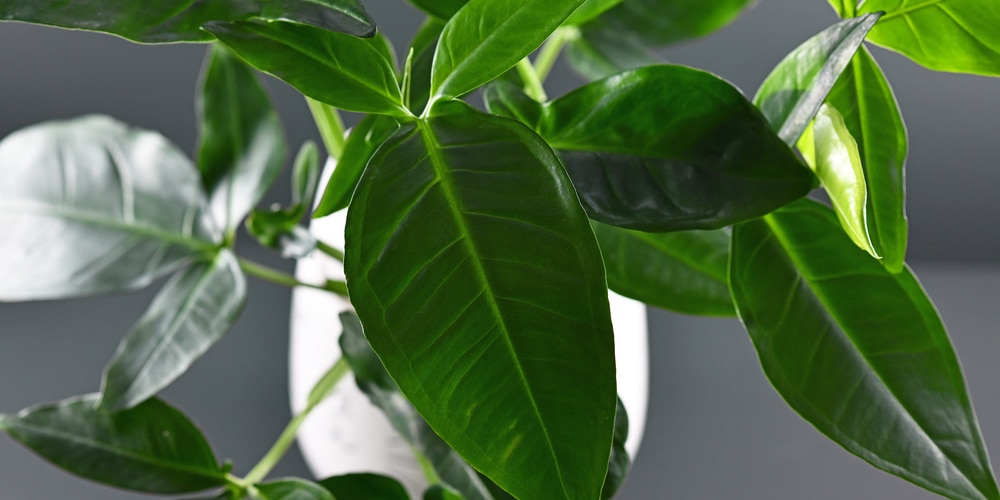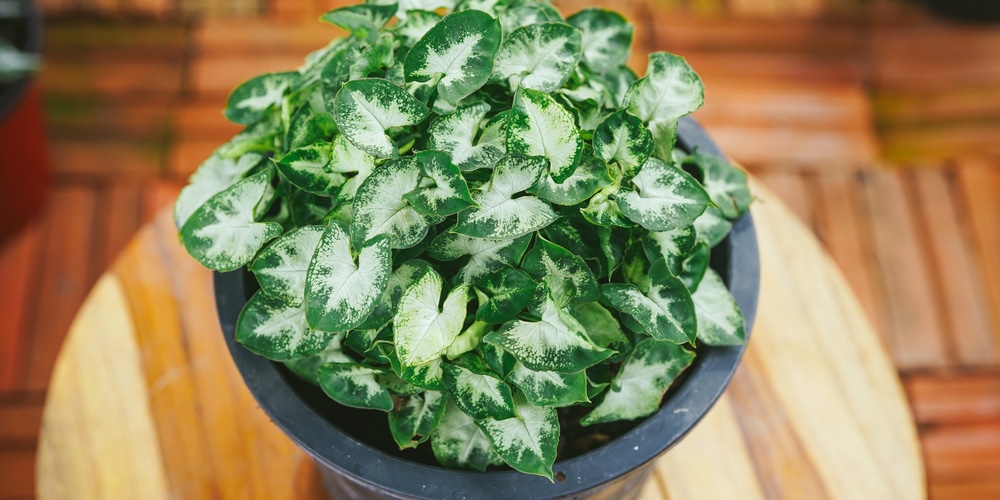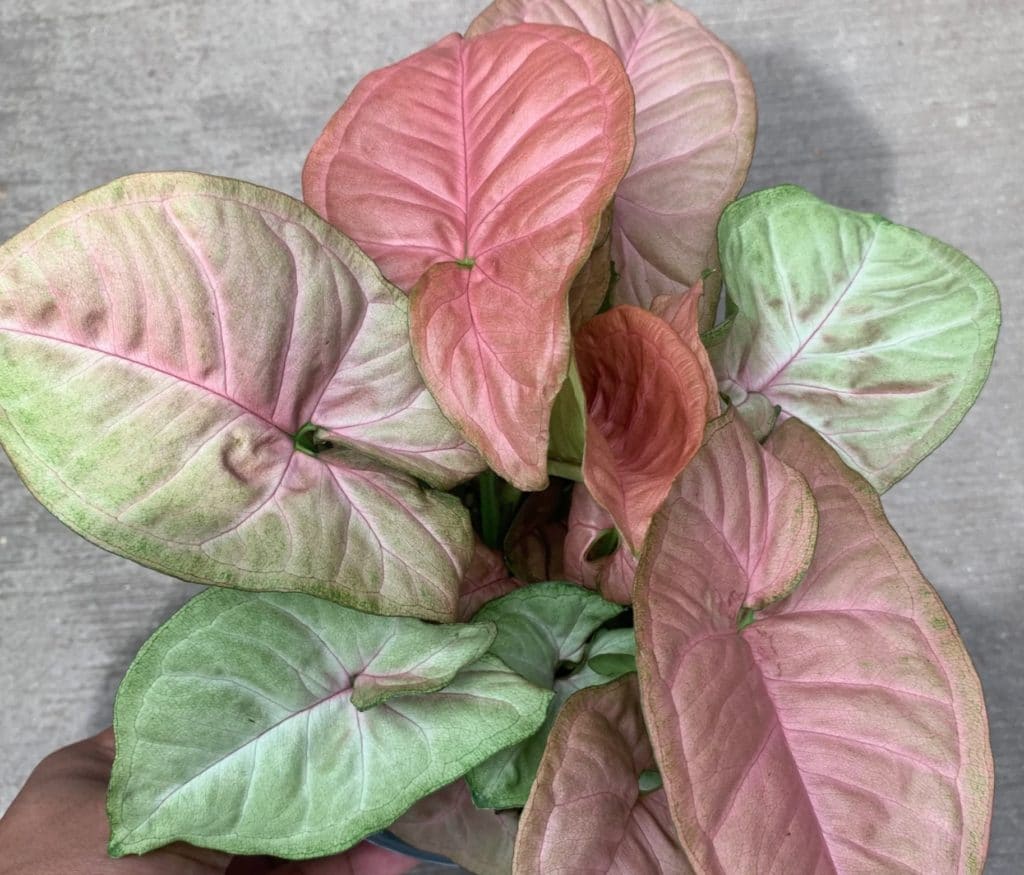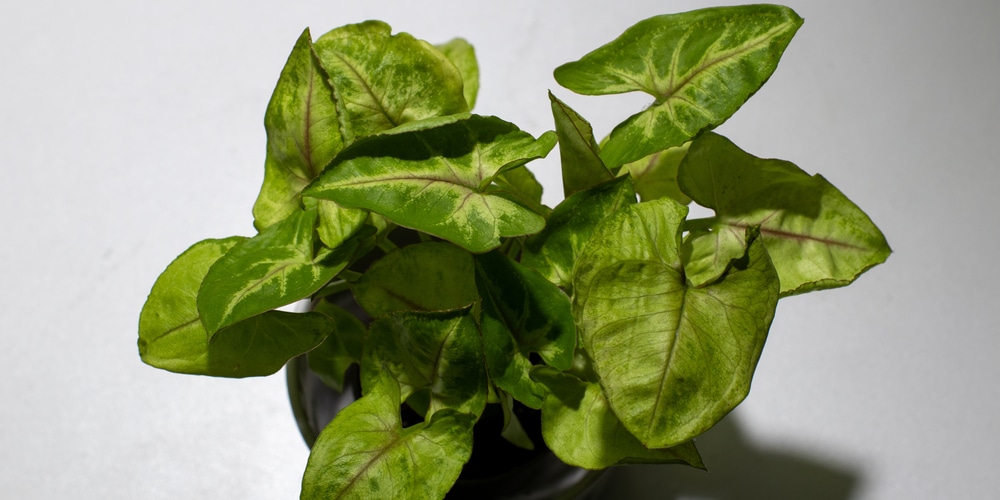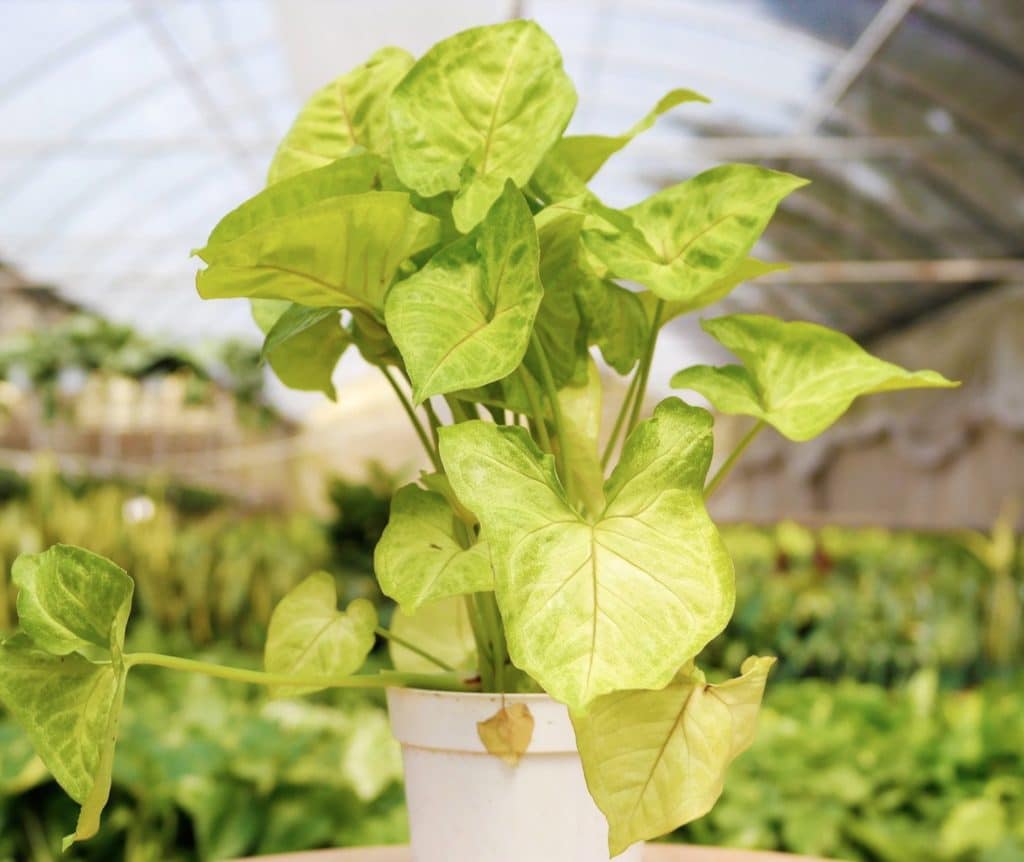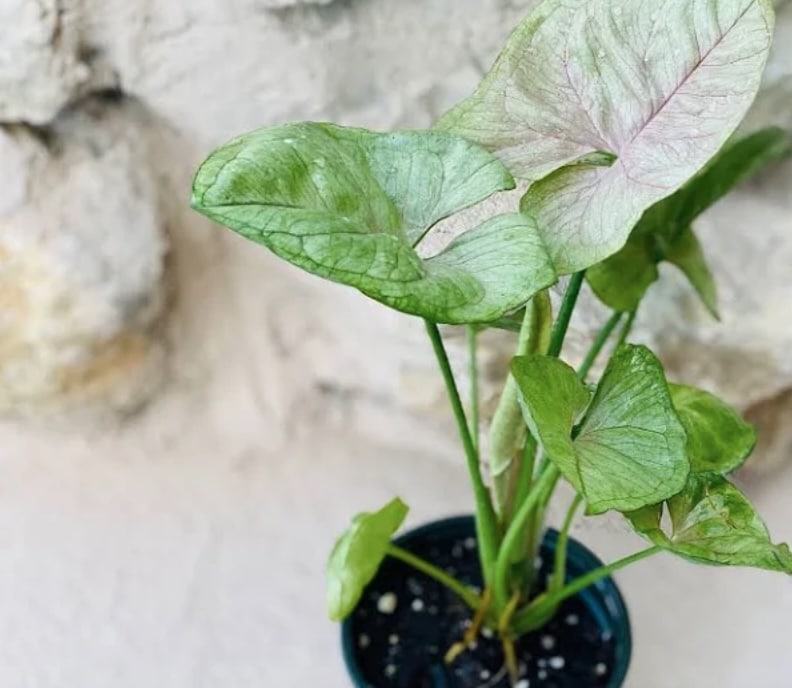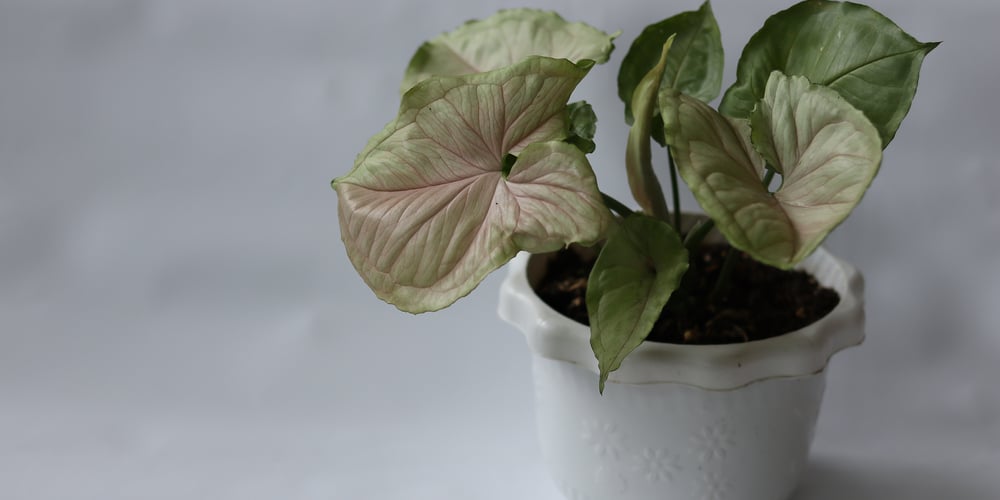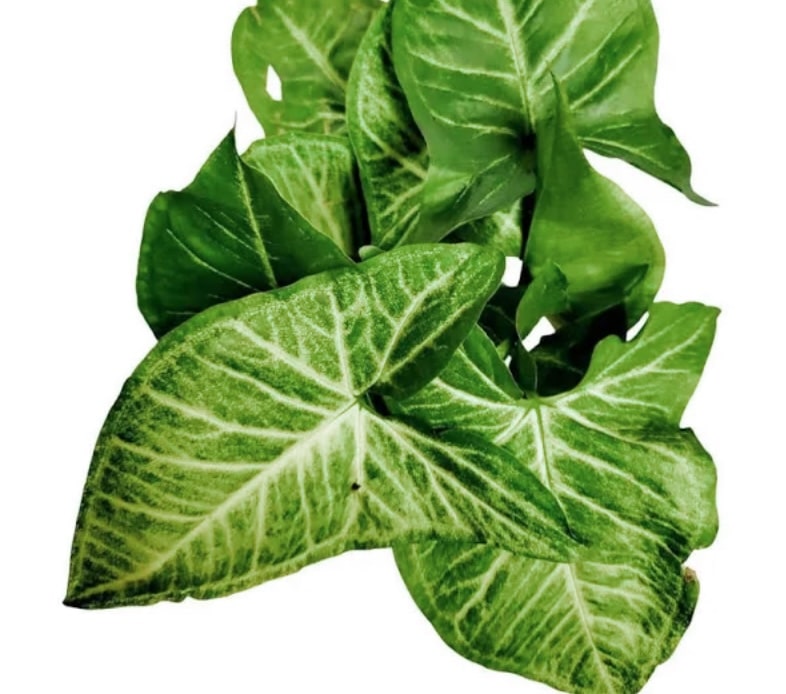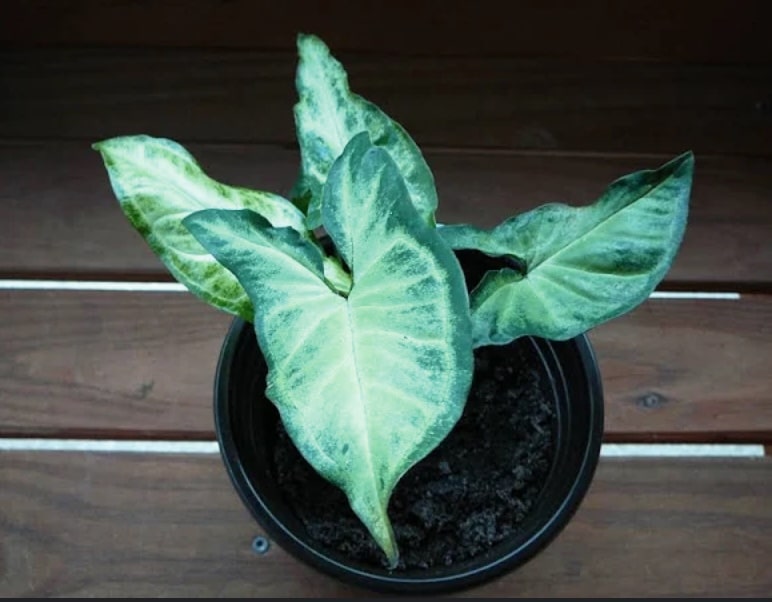There seems to be a lot of confusion about the various cultivars and varieties of Syngonium. There are two basically different types of Syngonium cultivars – thick-leaved and those with thinner foliage. These plants are tropical and have arrow-shaped leaves. The plant’s botanical name is syngonium podophyllum, and they are all members of the family Araceae.
Many types of Syngonium plants have very dark green leaves with a distinct white margin on the blade. While others are lighter green and tinged with red. The thick foliage is said to be an adaption to the high humidity environment of their native rainforest habitat. Let’s look at some of the most popular Syngonium varieties.
Syngonium varieties
Syngonium varieties tend to be given descriptive names rather than being labeled with a specific cultivar name. For example, one of the most popular varieties is called ‘White Butterfly’. This variety has white stitched markings on the dark green foliage.
All these popular Syngonium varieties are easy to care for houseplants that can tolerate lower light levels than most interiors offer. While they do produce aerial roots above the soil, they are all grown in organic soils with good drainage that are kept moist but not soggy wet.
Here are some popular Syngonium varieties:
Emerald Gem
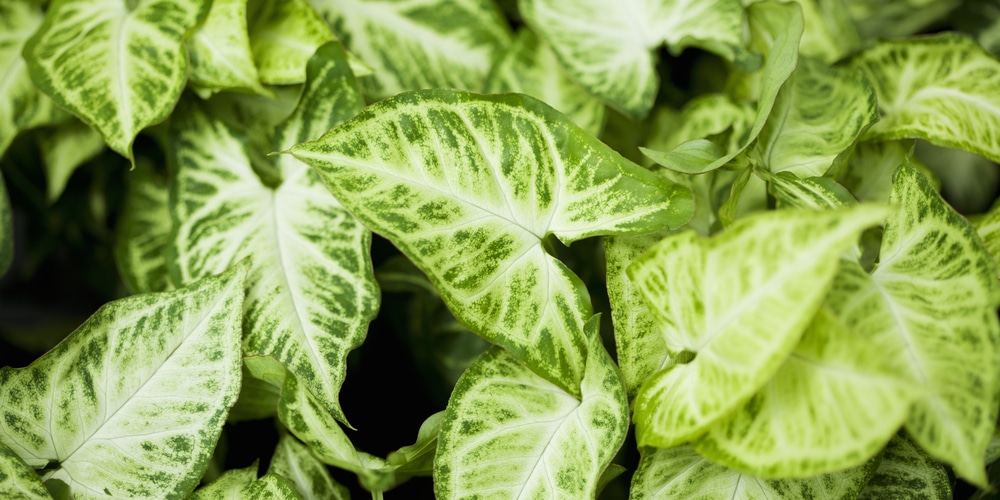
The blade of the Syngonium ‘Emerald Gem’ has a distinct green center and white variegation. These plants have large arrow-shaped leaves that grow on short stems. They are a relatively compact variety of Syngonium that can be grown on windowsills where other varieties would suffer from lack of humidity.
Holly Syngonium
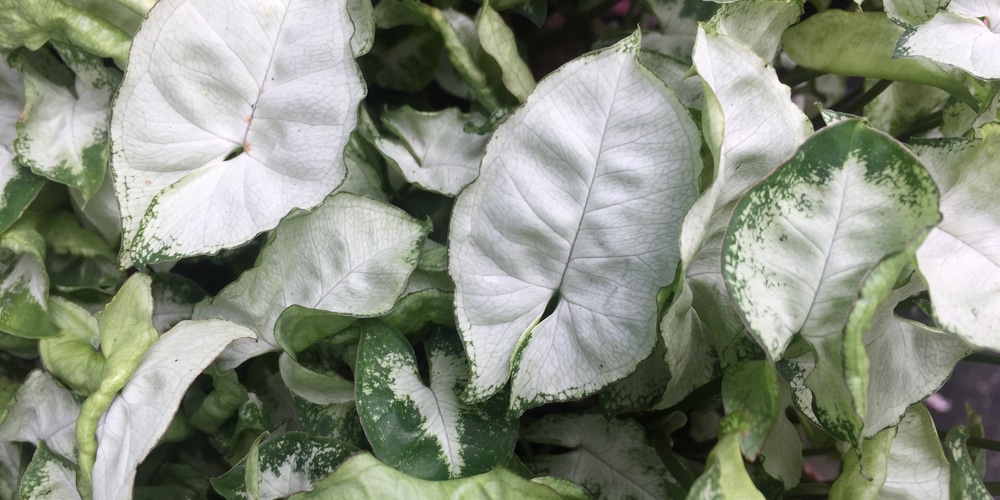
The leaves of this Syngonium variety are white; they have slightly darker green edges, mottling, and veins. It is also called the ‘Christmas Plant’ as it looks snow white. The foliage is deeply lobed, and it also has cream-colored undersides.
Trileaf wonder
Syngonium ‘tri leaf wonder’ has long, slender leaves that are very attractive to the eye. It is known for having one of the narrowest leaf blades of all the varieties. Its blade is only half an inch wide compared to most other varieties, which have blades around 2 to 3 inches wide. The leaves are a light green color with lighter veins; they grow on tall, upright stems.
Pixie Syngonium
The variegation comes from splotches of cream on the leaves that form when the sunlight hits it just right. It can quickly grow into a large clump if it’s happy in its surroundings.
Pixie arrowhead is an older variety with thicker stems and larger green foliage. It’s fairly compact, which has helped increase the plant’s popularity as a house plant. If you have pets, be careful where you place any variety of Syngonium because these plants are poisonous to dogs and cats.
Strawberry cream Syngonium
Strawberry cream Syngonium is one of the most beautiful varieties in the market. It has beautiful pink leaves, which are cream-colored underneath. These plants need to be placed in bright indirect sunlight to get the most from their coloring.
Strawberry cream plants are extremely popular in offices because they are easy to grow and are very resistant. It also produces small flowers on long thin stems called spadixes when conditions are right; otherwise, it’s just beautiful foliage all the time.
Berry Allusion
The berry allusion has light green leaves with pink veins. It’s among the slowest growing of all Syngonium varieties. It should be kept in an area that gets plenty of indirect sunlight, but it needs to be kept out of the hot sun, or its coloring will bleach out to almost white.
Berry Allusion is also one of the easiest varieties to grow, so it’s good for beginners because they are less likely to kill it if they forget about it for a few days.
Green Gold
The Syngonium ‘ Green Gold’ has broad, yellowish-green leaves. It’s leaves are large and grow on trailing stems. This is a larger variety that needs regular pruning to keep it in check.
Bold allusion
The Syngonium ‘Bold Allusion’ is a compact growth variety that has broad leaves and fleshy stems. The leaves are an attractive green color with a pink blush. This plant looks nice growing with other tropical plants and will add a hint of color to your room.
Maria allusion
Syngonium ‘Maria Allusion’ has dark green leaves with hues of copper and pink. It’s a fairly new variety of Syngonium and is very eye-catching as the leaves are so beautiful.
Painted Arrow
The Syngonium ‘Painted Arrow’ has dark green leaves with a creamy white mottled pattern. This plant looks beautiful and unique and is a great addition to the home. The leaves are large and grow on small stems.
Emerald Green
This variety has deeply lobed foliage with wavy leaf margins of light and dark green. The leaves veins are light green or cream colored, and the undersides are also variegated. The Emerald green is a popular variety as it remains fairly compact on maturity, which means that it can easily be grown in a small pot indoors.
Wendland
The Syngonium wendlandii is a slow grower that produces wide, flat leaves that have ruffled edges. Its coloration is mainly dark green with white or cream in the middle. The leaves grow on long, trailing stems, making it perfect for a hanging basket or to grow over the edge of a shelf or windowsill.
Commonly referred to as a Feng Shui plant, the wendlandii removes toxins from the home. This plant is native to tropical regions of South America and is most commonly found in Costa Rica.
Conclusion
Syngonium are actually related to philodendrons, peace lilies, and other popular tropical houseplants. They are grown under the same conditions as the above plants and thrive in warmer climates with moderate humidity.
You can expect your Syngonium plant to grow 1ft or more in height over time, making them good as an accent plant in a medium to large-sized container or hanging basket. Syngonium prefers growing at higher humidity levels than most homes provide, so misting regularly may be necessary during periods of low ambient air humidity.
There are many Syngonium varieties to choose from, so you’re sure to find the perfect plant for your home or office.
